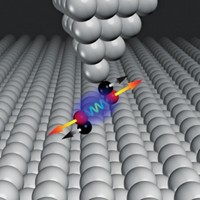Advertisement
Grab your lab coat. Let's get started
Welcome!
Welcome!
Create an account below to get 6 C&EN articles per month, receive newsletters and more - all free.
It seems this is your first time logging in online. Please enter the following information to continue.
As an ACS member you automatically get access to this site. All we need is few more details to create your reading experience.
Not you? Sign in with a different account.
Not you? Sign in with a different account.
ERROR 1
ERROR 1
ERROR 2
ERROR 2
ERROR 2
ERROR 2
ERROR 2
Password and Confirm password must match.
If you have an ACS member number, please enter it here so we can link this account to your membership. (optional)
ERROR 2
ACS values your privacy. By submitting your information, you are gaining access to C&EN and subscribing to our weekly newsletter. We use the information you provide to make your reading experience better, and we will never sell your data to third party members.
Analytical Chemistry
Scanning Probe Identifies Asphaltenes
Petrochemistry: Chemical structures of heaviest crude oil fractions yield to surface microscopy
by Mitch Jacoby
July 27, 2015
| A version of this story appeared in
Volume 93, Issue 30
Petroleum crude oil is an incredibly complex mixture, possibly containing more than 100,000 unique chemical compounds. Asphaltenes, a large group of polycyclic aromatic molecules containing alkyl chains, heteroatoms, and metals, are high-molecular-weight petroleum components that thwart oil recovery efforts and foul transport pipelines, refinery equipment, and catalysts. Detailed knowledge of asphaltene structures and other properties could help researchers relieve these problems and find uses for the materials. Yet because of asphaltenes’ complexity, diversity, and tendency to aggregate, researchers have struggled to identify the molecules’ structures. That information may soon be widely available from a method that combines atomic resolution imaging via atomic force microscopy and molecular orbital imaging from scanning tunneling microscopy (J. Am. Chem. Soc. 2015, DOI: 10.1021/jacs.5b04056). Bruno Schuler and Leo Gross of IBM Research in Zurich and colleagues, who developed the method, used it to reveal the structures of more than 100 asphaltene molecules ranging widely in composition, size, and shape.





Join the conversation
Contact the reporter
Submit a Letter to the Editor for publication
Engage with us on Twitter